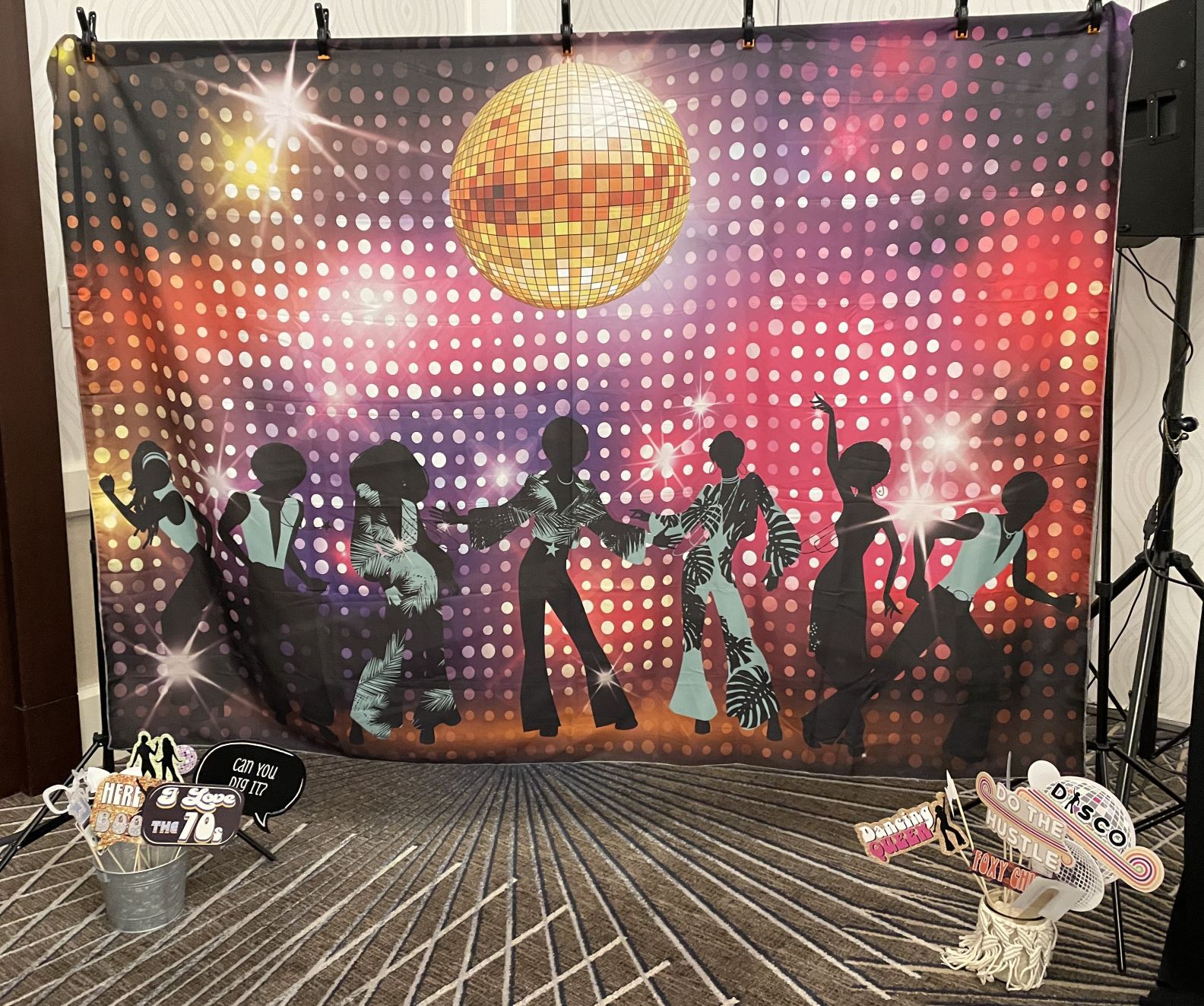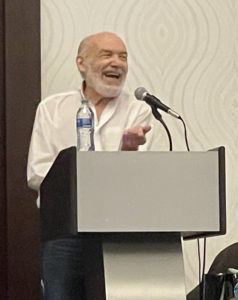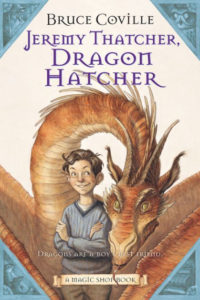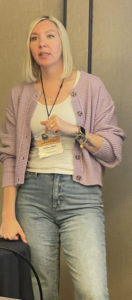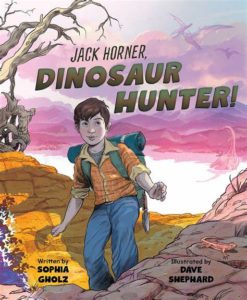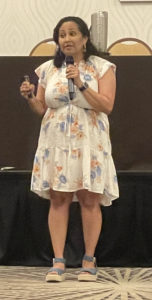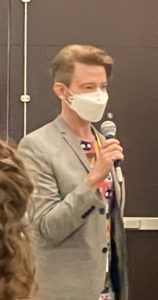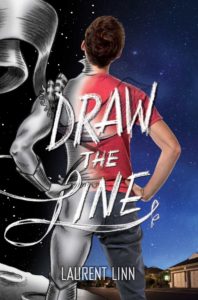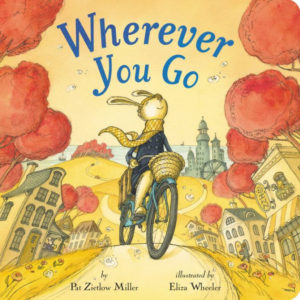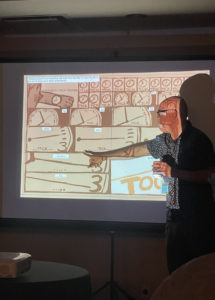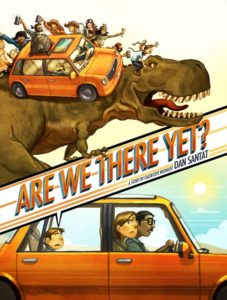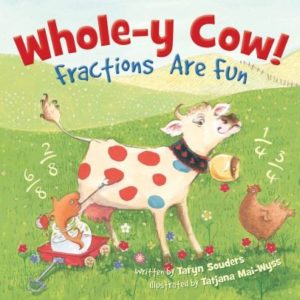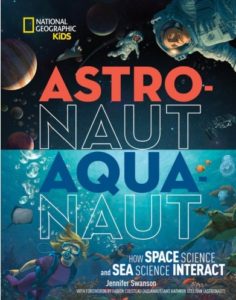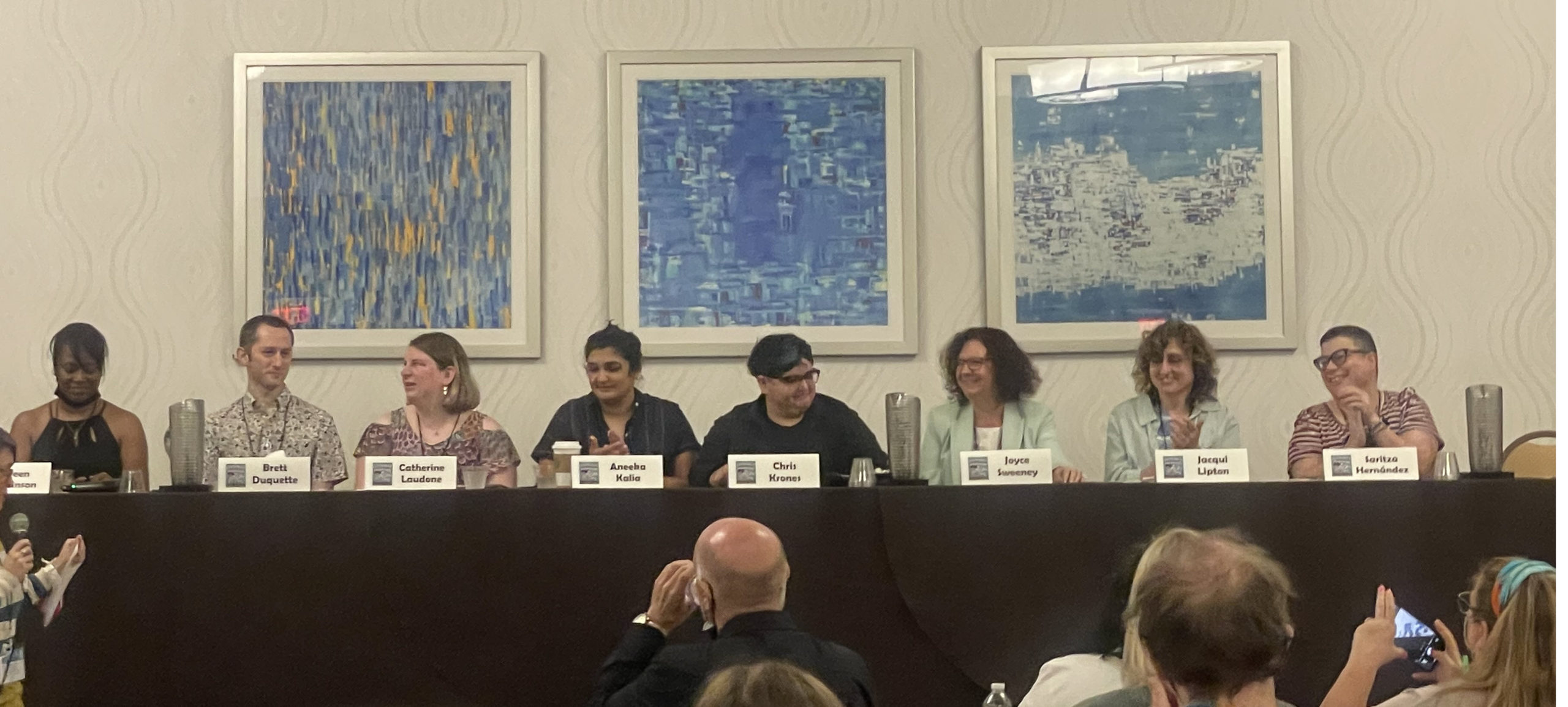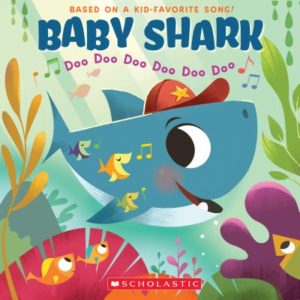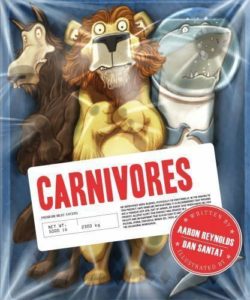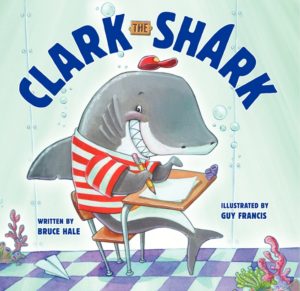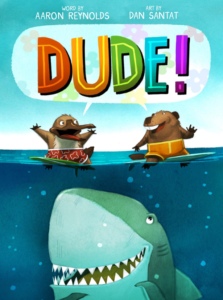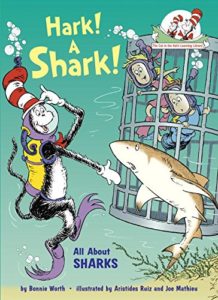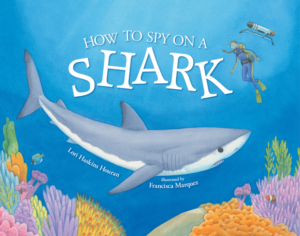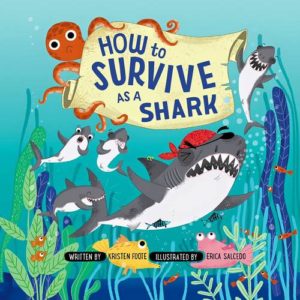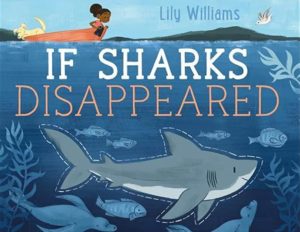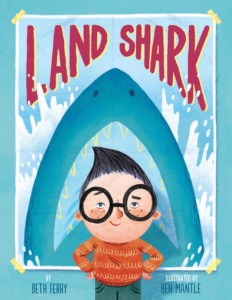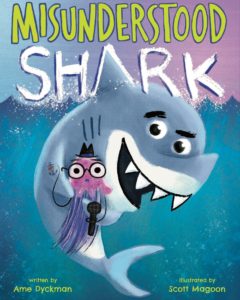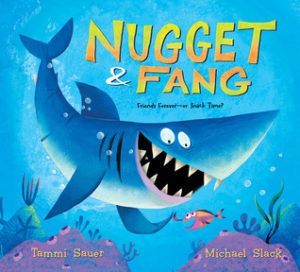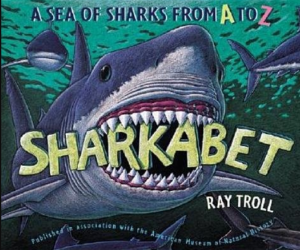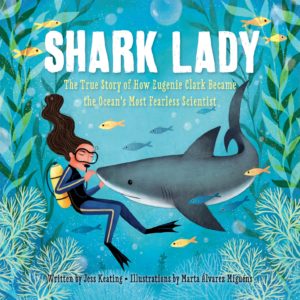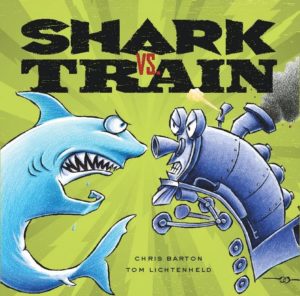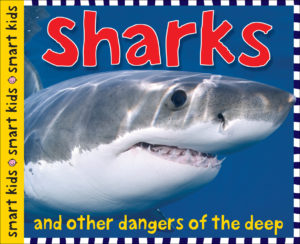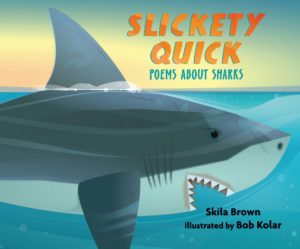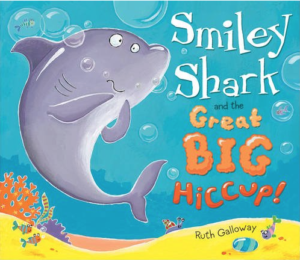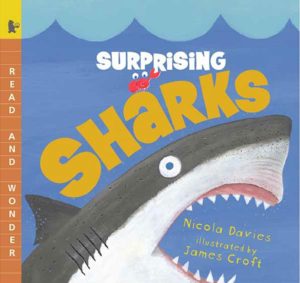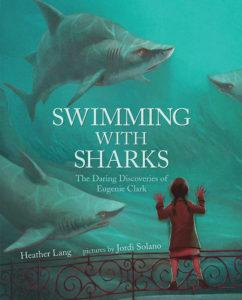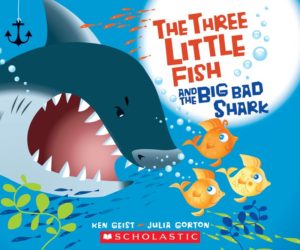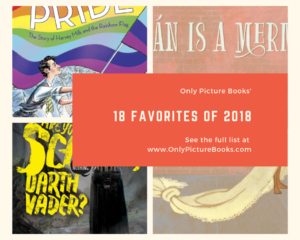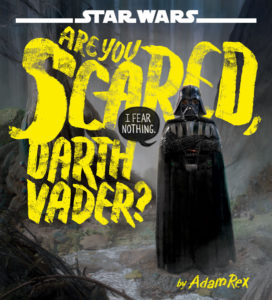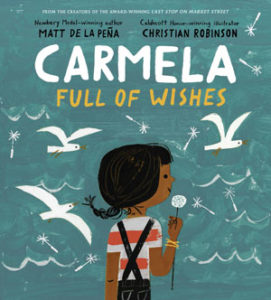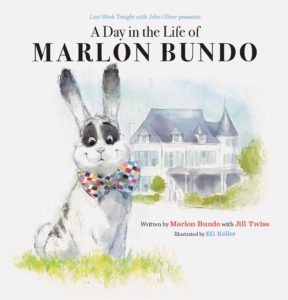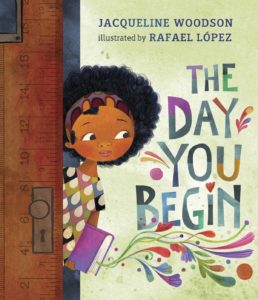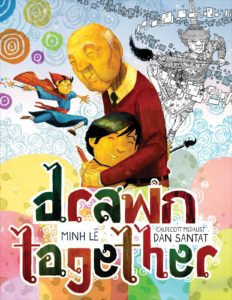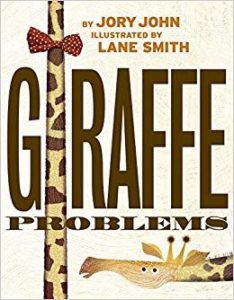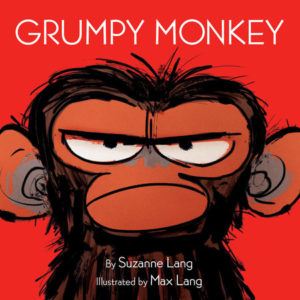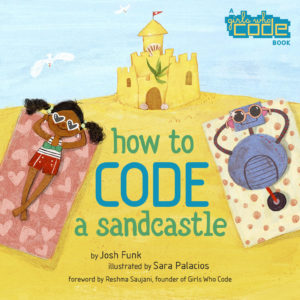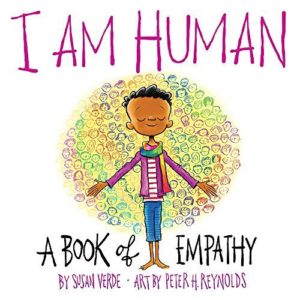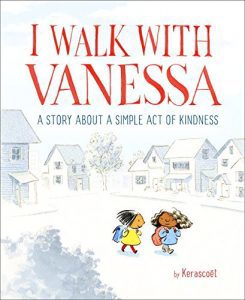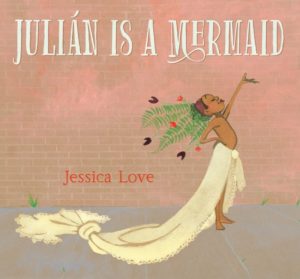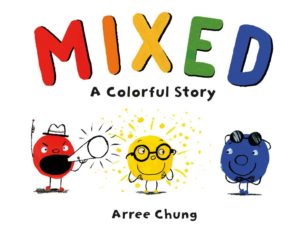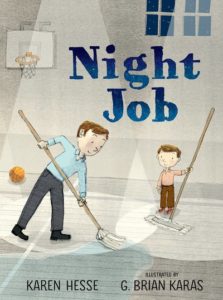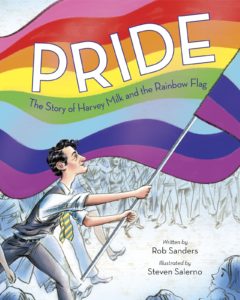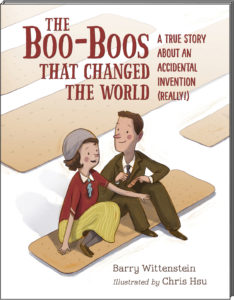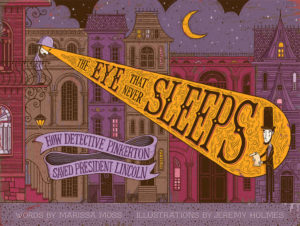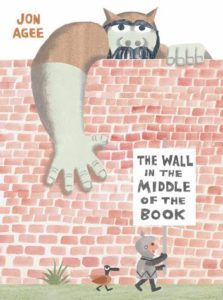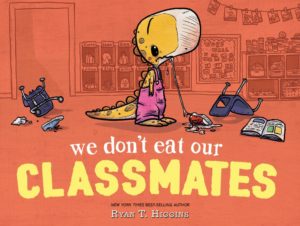My dad’s been busy with some book deadlines, and I like spooky things, so I offered to help out with this month’s Bonus Goody.
Enjoy the list of spooktacular picture books!
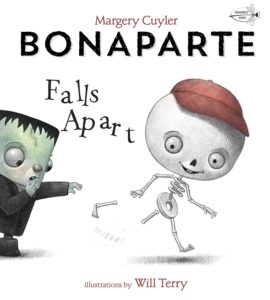 Bonaparte Falls Apart by Margery Cuyler, Illustrated by Will Terry (August 2020)
Bonaparte Falls Apart by Margery Cuyler, Illustrated by Will Terry (August 2020)
From Goodreads: “‘Bonaparte is having a tough time. It’s hard for this young skeleton to just hang loose when he can’t keep hold of himself. When he plays catch, his throwing arm literally takes a flyer. Eating lunch can be a real jaw-dropping occasion. How can he start school when he has so many screws loose? Luckily, Bonaparte hit the bone-anza when it came to his friends. Franky Stein, Black Widow, and Mummicula all have some boneheaded ideas to help pull him together. But will it be enough to boost his confidence and get him ready for the first day of school?”
Pages: 40
Reading Age: 3–6
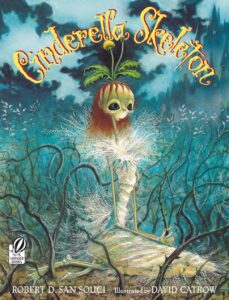 Cinderella Skeleton by Robert D. San Souci, Illustrated by David Catrow (September 2004)
Cinderella Skeleton by Robert D. San Souci, Illustrated by David Catrow (September 2004)
From Goodreads: “‘This ghoulish gal will steal your heart–just like she stole Prince Charnel’s!
Poor Cinderella Skeleton! Her evil stepsisters treat her with scorn and work her from dawn till dusk. But when Prince Charnel hosts his famous Halloween Ball, Cindy finally gets her chance to shine. With the help of a good witch, Cinderella Skeleton is transformed into the belle of the ball and steals the
prince’s heart. Then just as the sun peeks over the horizon, she must dash away! Will Prince Charnel ever find his true love again?
Master storyteller Robert D. San Souci and award-winning illustrator David Catrow have dreamed up a hilarious fractured fairy tale about the most dreadful darling you’ve ever seen.”
Pages: 32
Reading Age: 4–8
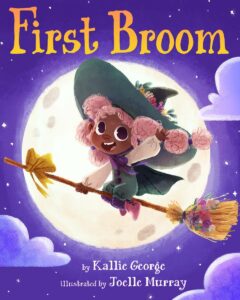 First Broom by Kallie George, Illustrated by Joelle Murray (June 2022)
First Broom by Kallie George, Illustrated by Joelle Murray (June 2022)
From Goodreads: “‘Little witch is so excited by her new present for Halloween night — a new broom! But learning to fly a broom is harder than you think, especially when you’re just a little witch. Will witch and broom learn how to work together to fly up high in the sky? A sweet and silly rhyming story full of gentle Halloween fun!”
Pages: 24
Reading Age: 3–5
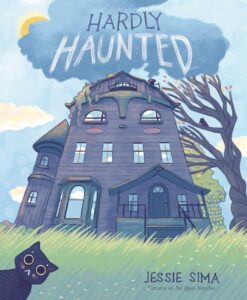 Hardly Haunted by Jessie Sima (July 2021)
Hardly Haunted by Jessie Sima (July 2021)
From Goodreads: “‘From the bestselling creator of Not Quite Narwhal comes a delightfully spooky story about an old house who wants to be a home…even if her new family isn’t what she expected.
House has a problem.
She’s a little spooky. She’s a little cobwebby. Oh, no! What if she’s haunted?
She’s not sure, but…her hinges creak. Her pipes bang. And on windy days, the branches scritch-scratch at her windows. She tries to hold her breath and be as still as possible. If she’s on her best behavior, maybe a family will move in.
How will House ever find a family that doesn’t mind being haunted?”
Pages: 48
Reading Age: 2–6
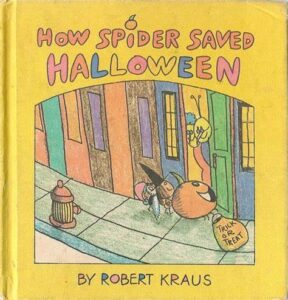 How Spider Saved Halloween by Robert Kraus (January 1988)
How Spider Saved Halloween by Robert Kraus (January 1988)
From Goodreads: “‘As Halloween draws near, poor Spider cannot find a costume, but Ladybug and Fly help him remedy the situation, and save the day.”
Pages: 32
Reading Age: 6–8
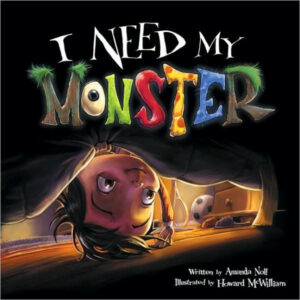 I Need My Monster by Amanda Noll, Illustrated by Howard McWilliam (July 2019)
I Need My Monster by Amanda Noll, Illustrated by Howard McWilliam (July 2019)
From Goodreads: “‘A unique monster-under-the-bed story with the perfect balance of giggles and shivers, this picture book relies on the power of humor over fear, appeals to a child’s love for creatures both alarming and absurd, and glorifies the scope of a child’s imagination. One night, when Ethan checks under his bed for his monster, Gabe, he finds a note from him instead: “Gone fishing. Back in a week.” Ethan knows that without Gabe’s familiar nightly scares he doesn’t stand a chance of getting to sleep, so Ethan interviews potential substitutes to see if they’ve got the right equipment for the job—pointy teeth, sharp claws, and a long tail—but none of them proves scary enough for Ethan. When Gabe returns sooner than expected from his fishing trip, Ethan is thrilled. It turns out that Gabe didn’t enjoy fishing because the fish scared too easily.”
Pages: 32
Reading Age: 3–6
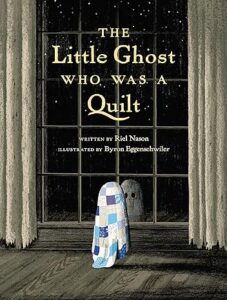 The Little Ghost Who Was a Quilt by Riel Nason, Illustrated by Byron Eggenschwiler (September 2020)
The Little Ghost Who Was a Quilt by Riel Nason, Illustrated by Byron Eggenschwiler (September 2020)
From Goodreads: “When you’re a quilt instead of a sheet, being a ghost isn’t easy! But one Halloween day, everything changes. The little ghost who was a quilt embarks on an adventure that no other ghost can experience… And what if it’s okay to be different?”
Pages: 48
Reading Age: 3–7
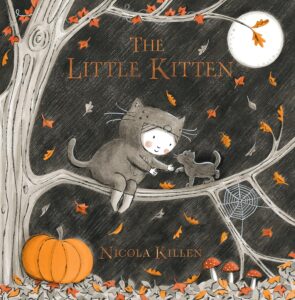 The Little Kitten by Nicola Killen (July 2020)
The Little Kitten by Nicola Killen (July 2020)
From Goodreads: “‘Ollie and her cat Pumpkin are out frolicking on a beautiful fall day when they come upon a tiny kitten shivering in a pile of fallen leaves. Ollie warms the kitten up and the three become fast friends, but when Ollie sees “Lost Kitten” posters hanging on the trees in the forest, she knows she has to help her new friend get home. As Halloween draws nearer, magic is afoot, and Ollie’s good deed is rewarded in an unexpected way.”
Pages: 32
Reading Age: 2–4
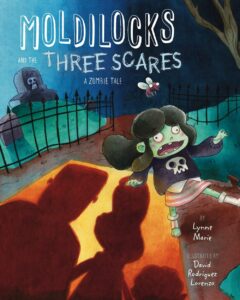 Moldilocks and the Three Scares: A Zombie Tale by Lynne Marie, Illustrated by David Rodriguez Lorenzo (March 1998)
Moldilocks and the Three Scares: A Zombie Tale by Lynne Marie, Illustrated by David Rodriguez Lorenzo (March 1998)
From Goodreads: “‘A fun, shivery take on a favorite fairy tale!
Forget Goldilocks and the three bears—MOLDILOCKS and the THREE SCARES are here, in a delightfully zombie-tastic new version of the popular story. Papa Scare (a monster), Mama Scare (a mummy), and Baby Scare (a vampire) live in a haunted house where they eat finger sandwiches and alpha-bat soup. One night, they go out to walk their dog (a bloodhound, of course) to let their soup cool down. While they’re away, in walks the zombie Moldilocks, looking for food, a chair, and a bed that’s just right. Kids will love this hauntingly funny story with its surprise ending!”
Pages: 40
Reading Age: 3–7
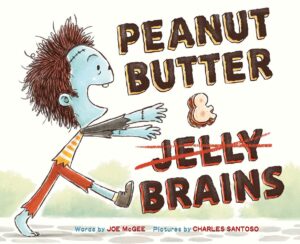 Peanut Butter & Brains: A Zombie Culinary Tale by Joe McGee, Illustrated by Charles Santoso (August 2015)
Peanut Butter & Brains: A Zombie Culinary Tale by Joe McGee, Illustrated by Charles Santoso (August 2015)
From Goodreads: “‘Reginald isn’t like the other zombies who shuffle through Quirkville, scaring the townspeople and moaning for BRAINSSSSS! The only thing Reginald’s stomach rumbles for is sticky peanut butter and sweet jelly. He tries to tell his zombie pals that there’s more to life than eating brains, but they’re just not interested. Will Reginald find a way to bring peace to Quirkville and convince the other zombies that there’s nothing better than peanut butter and jelly?”
Pages: 32
Reading Age: 3–8
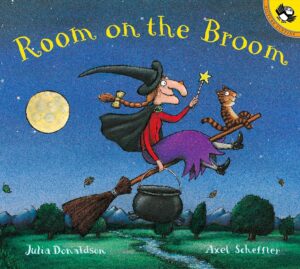 Room on the Broom by Julia Donaldson, Illustrated by Axel Scheffler (August 2001)
Room on the Broom by Julia Donaldson, Illustrated by Axel Scheffler (August 2001)
From Goodreads: “‘This fun family read-aloud i s the perfect way to start Halloween celebrations and an ideal gift book. A sweet story of quick wits, friendship, and inclusivity from the creators of The Gruffalo!
The witch and her cat are happily flying through the sky on a broomstick when the wind picks up and blows away the witch’s hat, then her bow, and then her wand! Luckily, three helpful animals find the missing items, and all they want in return is a ride on the broom. But is there room on the broom for so many friends? And when disaster strikes, will they be able to save the witch from a hungry dragon?”
Pages: 32
Reading Age: 2–5
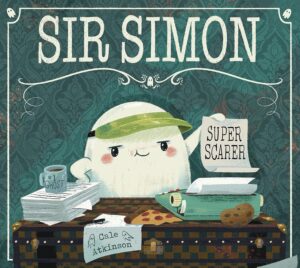 Sir Simon: Super Scarer by Cale Atkinson (August 2022)
Sir Simon: Super Scarer by Cale Atkinson (August 2022)
From Goodreads: “‘A delightful, funny story of friendship, ghost chores, a spooky house and a professional haunter.
Meet Sir Simon, Super Scarer. He’s a professional ghost who has been transferred to his first house. And just in time! He was getting tired of haunting bus stops and forests and potatoes. And to top it off, this house is occupied by an old lady — they’re the easiest to haunt!
But things don’t go as planned when it turns out a KID comes with this old lady. Chester spots Simon immediately and peppers him with questions. Simon is exasperated… until he realizes he can trick Chester into doing his ghost chores. Spooky sounds, footsteps in the attic, creaks on the stairs — these things don’t happen on their own, you know!
After a long night of haunting, it seems that maybe Chester isn’t cut out to be a ghost, so Simon decides to help with Chester’s human chores. Turns out Simon isn’t cut out for human chores either.
But maybe they’re both cut out to be friends …”
Pages: 48
Reading Age: 4–7
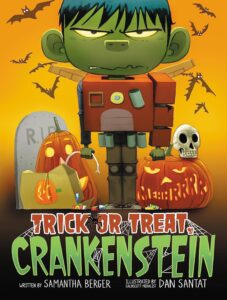 Trick or Treat, Crankenstein by Samantha Berger, Illustrated by Dan Santat (August 2021)
Trick or Treat, Crankenstein by Samantha Berger, Illustrated by Dan Santat (August 2021)
From Goodreads: “‘What we have here is a bad case of stripes. One of the worst I’ve ever seen!’ Camilla Cream loves lima beans, but she never eats them. Why? Because the other kids in her school don’t like them. And Camilla Cream is very, very worried about what other people think of her. In fact, she’s so worried that she’s about to break out in…a bad case of stripes!”
Pages: 40
Reading Age: 4–8
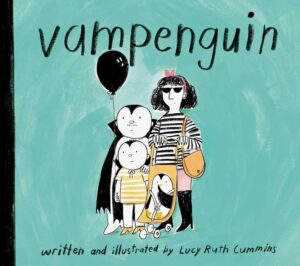 Vampenguin by Lucy Ruth Cummins (July 2021)
Vampenguin by Lucy Ruth Cummins (July 2021)
From Goodreads: “‘On a Saturday morning, baby Dracula visits the zoo with his family, where baby Penguin lives with hers. But these intrepid young adventurers are not content with staying in their proper places.
Instead, baby Dracula slips into the Penguin House to spend the day eating, swimming, and hanging around, while baby Penguin waddles into the stroller to explore the rest of the zoo. Dracula’s family doesn’t even notice the switch—will they bring the right baby home?
Observant and adventurous young readers will love this tale of the shenanigans that happen when parents’ backs are turned.”
Pages: 48
Reading Age: 4–8
Vampirina Ballerina‑A Vampirina Ballerina Book by Anne Marie Pace (August 2012)
From Goodreads: “‘Oh, to be a ballerina! It’s a challenge for any little girl, but even more so if you happen to be a vampire like Vampirina. First of all, you have to find a class that meets at night. Then you have to figure out how to perfect your form when you can’t see yourself in the mirror? And then there’s wearing pink (not the most flattering of colors if you happen to be undead) and that nagging urge to take a little nip out of the other dancers. And worse of all STAGE FRIGHT!!!”
Pages: 40
Reading Age: 2–7
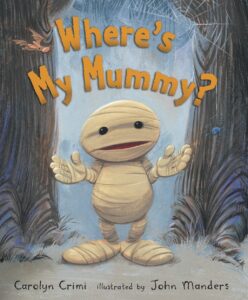 Where’s My Mummy? by Carolyn Crimi, Illustrated by John Manders (July 2009)
Where’s My Mummy? by Carolyn Crimi, Illustrated by John Manders (July 2009)
From Goodreads: “‘Little Baby Mummy wants just one more game of hide-and-shriek with Big Mama Mummy before bedtime. The night is deep and dark, full of friendly creatures that click their clacky teeth and whoosh past on flippy-floppy wings. But who will comfort Little Baby Mummy if a small, scritchy-scratchy someone gives him a scare? Big Mama Mummy, of course! Fresh, comical illustrations complement this ever-so-slightly suspenseful story with a satisfying ending.”
Pages: 32
Reading Age: 2–6


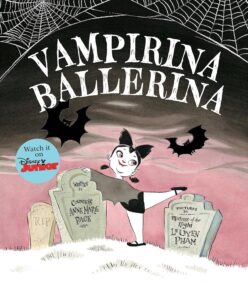
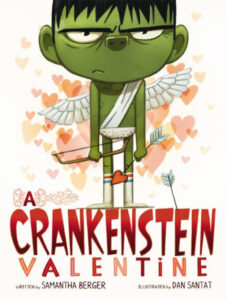
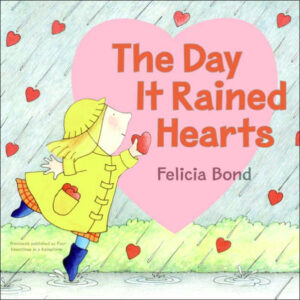
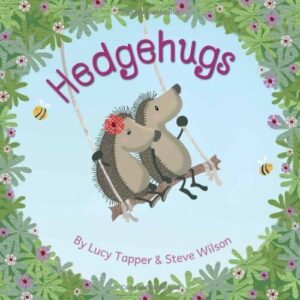
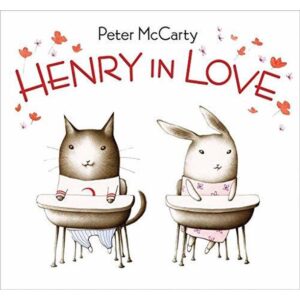
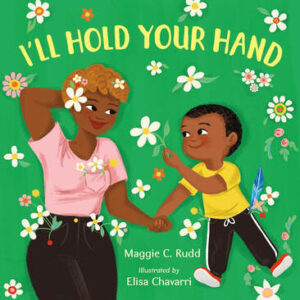 I’ll Hold Your Hand
I’ll Hold Your Hand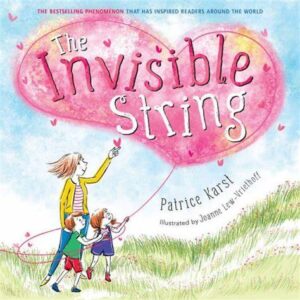
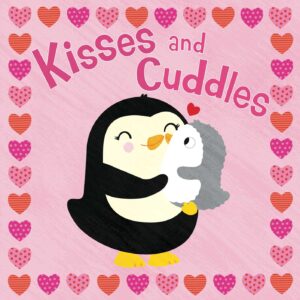
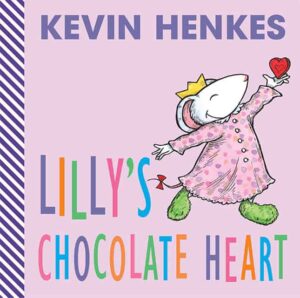
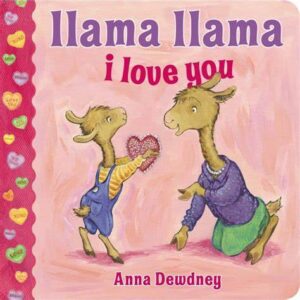
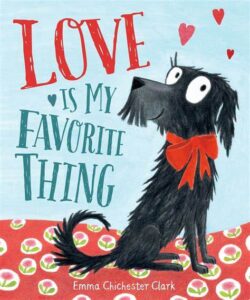
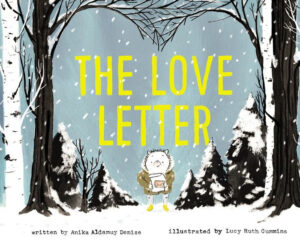
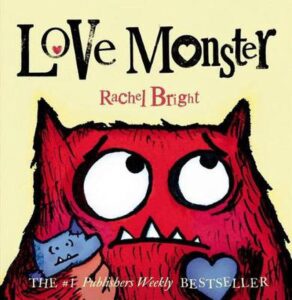
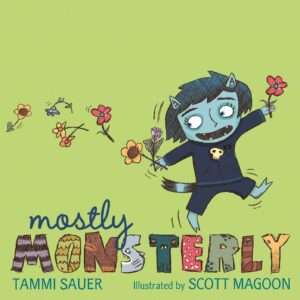
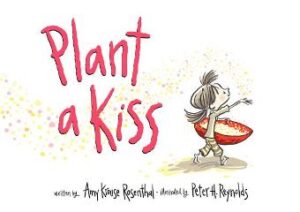
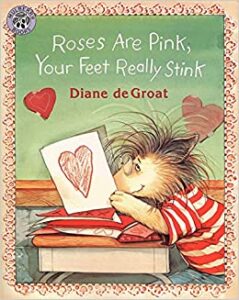
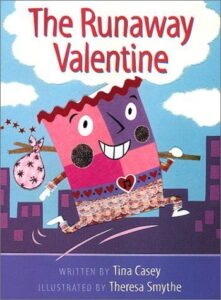
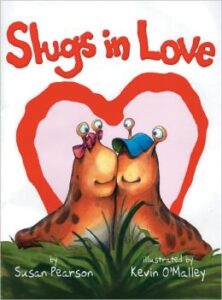
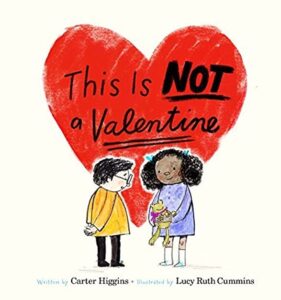
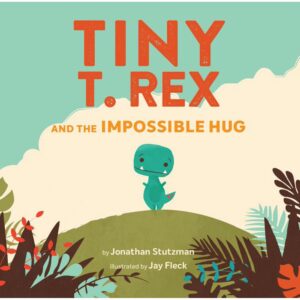
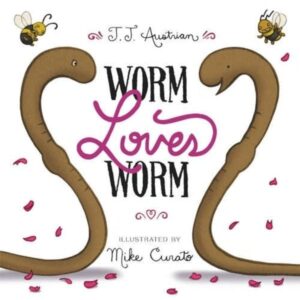
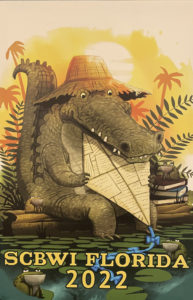 Normally, the third Monday of the month means an Industry Insider Interview, which is me doing a deep dive into the career of a single editor, agent, or other picture book industry person. But since I just got back from the rousing success that was the May 2022
Normally, the third Monday of the month means an Industry Insider Interview, which is me doing a deep dive into the career of a single editor, agent, or other picture book industry person. But since I just got back from the rousing success that was the May 2022 